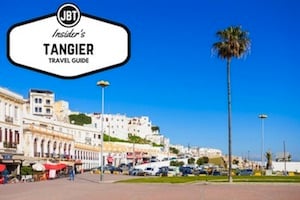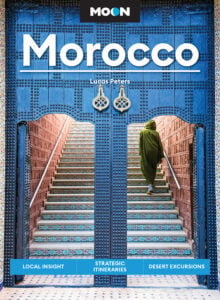As the temps begin to plunge closer and closer to that omnipotent zero degrees, the last alternative we fellow hikers want is to stay indoors all winter. No, we will hike and freeze if we must in order to reach that trailblazer or peak! Of course, there are easy ways and hard ways to go about our hikes. With the proper gear, a hike, especially in a foreign country like Morocco, especially up a foreign mountain like Jbel (Mount) Toubkal, can be enjoyable and refreshing rather than painful and unbearable. When hiking in the High Atlas Mountains up Jbel Toubkal in Morocco, it’s imperative to pack gear that will see you to the top.
Jbel Toubkal at 4167 meters or 13,667 feet is the highest peak of the High Atlas Mountain range in Morocco, which extends from Agadir to northern Algeria in an east to northeasterly direction. Like a mock of it’s older twin brother, the Anti Atlas encompassing Jbel Sahro with Jbel Sirwa bridging the High Atlas and Anti Atlas runs analogous and equidistant to the High Atlas range.
The Jurassic Period kicked off around 208 million years ago: The African plateau, including the High and Anti Atlas Mountains in Morocco, were given a big boost when the earth’s crust began to fold and crumble when subterranean (perhaps volcanic) activity pushed upwards. The northern part of the Atlas Mountains, including the Rif Mountains around Chefchaouen, however, were formed about 65 million years ago during the Tertiary Period when the earth’s crust again lifted and folded under the pressure of earthquakes. This top layer was later varnished in sheets of sandstone and clay, with the occasional earthquake hubbub still felt today.
We all love a little geography lesson, but it’s the High Atlas gear and not history that will enable you to survive (or, at least, be comfortable) during your trek up Mount Toubkal. Some of the items mentioned here are inherently common-sense to avid trekkers and hikers, but for those of us who may not have as much forte in this area, then this list will help you decide what is indispensable and what is optional.
Presently, trekking in the High Atlas Mountains in Morocco can be done with a Morocco tour company, arranging the mountain guides and mules yourself, or carrying your own pack. If you choose to hire a Morocco tour company based in country to arrange your hike, walk, or trek, you’ll have the best chance of getting the most experienced, trustworthy and certified and thus trained guides the mountains offer.
Either way, an important piece of equipment is your backpack. The time-tested best choices usually have an internal adjustable frame with expandable side and front pockets. Arrange the heaviest items in the pack around the middle so that the majority of the weight sits on your hips and not your shoulders. A 55 to 75 liter backpack (with water proof cover and zippers) should suffice, with removable daypacks being ever-popular among tourists, trekkers, hikers, and vacationers alike. Walk with your pack a couple times per week for four weeks before coming to Morocco to hike in the High Atlas Mountains and especially if you’re going to take on Mount Toubkal.
Though there is a base camp just a couple hours from the top of Jbel Toubkal in the High Atlas Mountains, offering cooking facilities, showers (often cold water only) and beds with a thin mattress, you must bring your own sleeping bag and sleeping mat, preferably a name brand like Thermorest. Reviewers of hiking gear often suggest buying synthetic fiber-filled sleeping bags. However, as long as your bag remains dry, then you’ll have no problems with down-filled. In addition to your sleeping bag, bring a sleeping liner or sleep sheet, which can be cleaned easier than your sleeping bag and dries much, much quicker.
The next piece of winter equipment you’ll need for hiking or trekking in the High Atlas Mountains in Morocco is hiking boots. If you choose to bring leather boots, make sure to bring along a water sealant like Nikiwax and doubly make sure they are Gortex or Sympatex lined, making them both water- and snowmelt-proof. The best boot choice, nevertheless, are ones that are synthetic with Gortex. If you have warm socks, such as Smartwool hybrids with Coolmax fibers, then you’ve got no worries. Outdoor stores the world over sells these for $13 to $27 USD. Liner socks and extra shoe-strings can make life a little more bearable if you’re planning a multi-day hike.
The winter season on Jbel Toubkal is a long one given the altitude. With temperatures in the mid-60s and -70s in Marrakech and Ouarzazate, the High Atlas, especially around Mount Toubkal, can be in the teens. Boots, then, only offer so much traction for snow and ice. If you want a comfortable hike or trek up and down Jbel Toubkal, then you must wear crampons. Now, you won’t necessarily need the kind that screw into the bottom of your boots, but crampons that clamp over the top with metal components underneath are fantastic for reasonable amounts of snow. Crampons that cover your heal and forefoot are better for upward and downward mobility, however.
One additional piece of equipment that cannot be ignored is hiking poles. Offering both balance and security, hiking poles are just as important as crampons and boots insofar as comfort and safety are concerned. Just as boots have crampons, hiking poles often come with screw on-off saucers making snow hiking easier as your poles won’t sink to the ground but will stay on top of the snow.
Hiking Jbel Toubkal in Morocco also requires some quintessential winter equipment. Bring two pairs of gloves, a neck scarf or two, wearing wicking layers underneath your hiking cardigan. You’ll also want pants that are tripartite: waterproof, windproof, and wicking. Additionally, polarized sunglasses and winter face cream (UV protectant of 30 spf) make winter wind- and sun-burns less likely and more tolerable.
The High Atlas Mountain range in Morocco with Jbel Toubkal form the backbone of this multifaceted country. Morocco affords outdoor lovers from experienced, hardcore hikers and trekkers to day strollers a chance to experience a part of the country often overlooked by ninety-nine percent of holidaymakers to Morocco. With the proper hiking gear for Morocco, you’ll experience the genuine Morocco where inhabitants work the lands and herd the livestock the same as years long passed.








